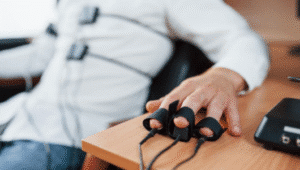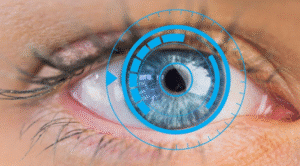Lie detector tests are widely considered a reliable tool for detecting deception. But are they? While polygraph exams can yield remarkably high accuracy scores if professionally administered, cases abound where the credibility of these tests was later challenged by more solid evidence.
Take Gary Ridgway, for instance. Ridgway, who was later christened the macabre title “Green River Killer,” passed a lie detector test in 1984 while under murder investigations. It was not until 20 years later that the prolific serial killer confessed to his crimes in the face of compelling DNA evidence.
There’s also Lewis Randolph Williamson, who previously passed a polygraph exam in 1979 while being investigated for the murder of Esther Gonzalez. Like Ridgway, Williamson was later indicted after DNA evidence linked him to the crime.
These are but a few cases that underscore the limitations of lie detector tests.
Now, the use of countermeasures is one key strategy deployed by polygraph examinees to pass the tests. Fortunately, experienced polygraphers can see right through the deception. Here’s a guide to what polygraph countermeasures are and how qualified examiners can spot them.
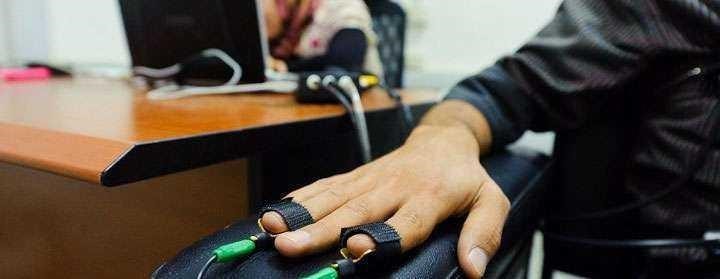
What Are Countermeasures?
To fully grasp the concept of countermeasures, it’s important to understand how a polygraph instrument works.
A polygraph test measures fluctuations in certain involuntary processes regulated by the Autonomic Nervous System (ANS), which are associated with deception. Commonly monitored functions include:
- Breathing rate and volume
- Cardiovascular responses
- Skin conductivity
- Body motions
Everyone has their normal baselines with respect to these functions. However, studies have shown that deception can arouse the autonomic nervous system and cause a dramatic change in ANS-controlled physiological processes.
Polygraph instruments measure a deviation from those baselines, enabling examiners to infer truthfulness or deception.
Now, countermeasures are techniques commonly used by lie detector examinees to try to manipulate the test outcomes. Individuals using countermeasures may attempt to temper or increase their responses to specific polygraph questions.
Why Do Polygraph Examinees Deploy Countermeasures?
Most people use countermeasures during polygraph exams to conceal deception. It’s a common practice while polygraphing hardcore criminals, who recognize that their life depends on the outcome of a polygraph test.
However, innocent individuals may also deploy countermeasures. This often happens when a person increases their responses to a polygraph question to emphasize their truthfulness.
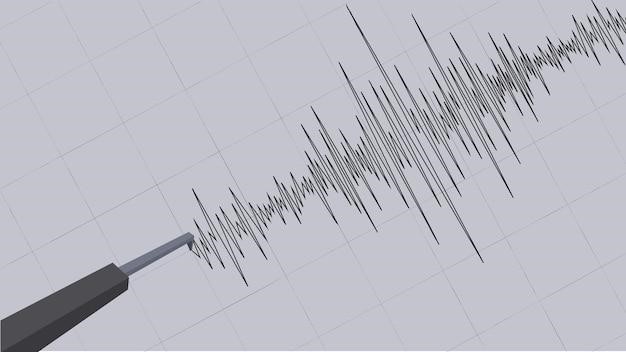
Classification of Countermeasures
According to the American Polygraph Association (APA), countermeasures fall into four distinct categories, including:
- General State Countermeasures – Deployed to alter the outcome of a polygraph test throughout the exam
- Specific Point Countermeasures – Target specific questions
- Information Countermeasures – Where an examinee researches how to beat a polygraph test shortly before the exam
- Spontaneous Countermeasures – Occurs with no or minimal control by the subject
Examples of Countermeasures
- Physical, such as muscle tensing and tongue biting
- Mental, such as visualizing stressful scenarios and invoking distracting imagery
- Behavioral, such as breath control
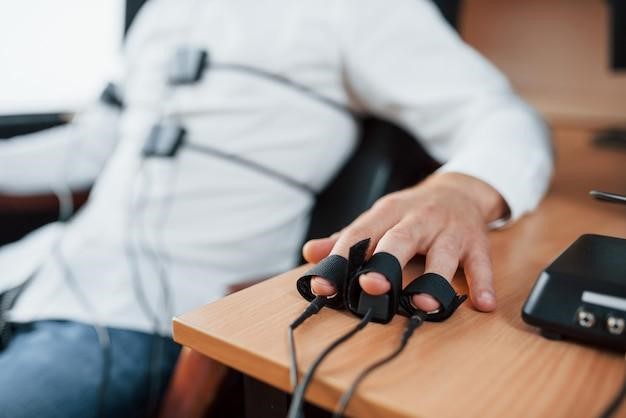
Ways Polygraphers Can Detect Countermeasures
1. Taking Physiological Baselines
Starting with the pre-test, the examiner helps establish rapport, clarify the purpose of the test, and review the questions that will be asked. Crucially, it also allows the examiner to observe the examinee’s physiological baseline responses—such as breathing, heart rate, and skin conductivity—which are later compared to their reactions during the in-test phase to assess truthfulness.
2. Avoiding Prior Discussions on Countermeasures
Polygraph examinees must be made aware of the test subject in an upcoming evaluation. There’s no such thing as a surprise lie detector test.
However, examiners should only disclose information that’s relevant to the matter under investigation.
Professional polygraphers wouldn’t delve into unnecessary details, such as issuing warnings against the use of countermeasures. Instead, they simply encourage the examinee to respond truthfully to every question.
3. Designing Questions Properly
Qualified polygraph examiners typically follow proper question design rules that make it difficult for an examinee to deploy countermeasures.
For instance, every question requires a flat Yes or No answer.
The queries must also be brief and objective. Asking questions in an accusatory tone might throw the examinee over the edge and have them deploy countermeasures even if they’re innocent.
4. Questioning the Examinee Directly On the Use of Countermeasures
While it’s imprudent to delve into the mechanism of countermeasures with a polygraph examinee before an actual polygraph test, an experienced examiner can subtly bring the matter up during the in-test phase.
For instance, a polygrapher may directly question the examinee on whether they used countermeasures by posing a question like: Did you deploy any tactics to pass this polygraph test?
Such queries are typically posed at the tail-end of the in-test phase.
5. Interpreting the Report Analytically
Proper interpretation of polygraph recordings is critical when making an inference of truthfulness or deception. It also enables polygraphers to sift out patterns of response that suggest the examinee might have deployed countermeasures.
A stronger response to relevant than control questions typically suggests deception, while the converse indicates truthfulness.

Enhancing Polygraph Accuracy Through Effective Countermeasure Detection Mechanisms
When confronted with the prospect of taking a polygraph exam, many seasoned criminals may deploy every trick in the book in an attempt to beat the lie detector tests.
Countermeasures can affect test accuracy, but experienced examiners are trained to recognize indicators of manipulation, reducing their potential impact. Moreover, examiners always use motion sensors to detect physiological attempts to defeat the exam.
The fact that polygraphs measure ANS-regulated physiological functions (which are difficult to manipulate) makes it even more challenging for examinees to have their way with countermeasures.



